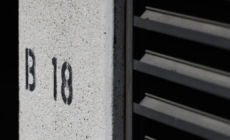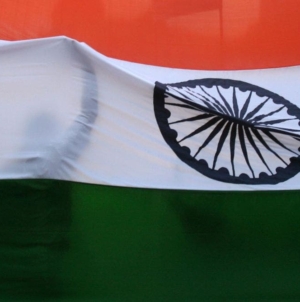-
Dodgers To Be Without Pitcher Alex Vesia - 15 mins ago
-
India’s $70 Billion Energy Engine Behind $15 Billion AI Leap - 27 mins ago
-
Emma Stone reveals she briefly used a different stage name early on - 34 mins ago
-
King Charles joins Pope Leo in historic prayer at the Sistine Chapel - 37 mins ago
-
Federal judge issues tentative ruling ordering that immigrant detainees have access to legal counsel - 58 mins ago
-
Blue Jays’ Trey Yesavage Talks Facing Dodgers’ Shohei Ohtani - about 1 hour ago
-
Trump calls off San Francisco ‘surge,’ but East Bay braces for action as protests erupt - 2 hours ago
-
Two Police Departments Drop Agreements With ICE - 2 hours ago
-
Rob Manfred on Vlad Jr. following his father’s footsteps, Ohtani hype, Blue Jays’ clubhouse party - 2 hours ago
-
Putin defiant in response to U.S. sanctions against Russian oil - 2 hours ago
China Doubles Down on Presence in Disputed Waters
China has reportedly bolstered its presence in a disputed maritime zone near South Korea by deploying personnel on a man-made structure.
The Chinese Foreign Ministry did not immediately respond to a request for comment.
Why It Matters
China and South Korea created the Provisional Measures Zone (PMZ) in the Yellow Sea under a 2000 agreement, where their 230-mile-wide exclusive economic zones (EEZs) overlap, pending a final maritime boundary settlement between the two nations.
Operating the world’s largest navy by number of vessels, China has been accused of attempting to militarize the Yellow Sea by deploying warships to the PMZ and waters considered part of the South Korean EEZ, maintaining a persistent military presence.
China’s moves in the disputed waters, including the installation of man-made structures, have raised concerns in South Korea over the potential for China to change the status quo in its favor.
What To Know
South Korean lawmaker Yi Byeong-jin released a photo on Wednesday showing what he claimed were five people working on a China-installed maritime structure in the PMZ, which is believed to be used for marine farming, Yonhap News Agency reported.
One of the personnel was spotted wearing a wetsuit and handling an oxygen tank, the lawmaker said, questioning the purpose of the structure, as such equipment is rarely used for marine farming. The photo also showed a high-speed boat near the structure.
The structure in question is Shenlan 2, a floating aquaculture facility that cultivates salmon in the cold waters of the Yellow Sea, and is capable of accommodating 1 million fish amid growing seafood demand in China, according to Xinhua News Agency.
The Shenlan 2 is located on the western side of the PMZ, outside South Korea’s EEZ but within China’s self-declared maritime demarcation line, according to a map by the Korea JoongAng Daily. Another similar structure, the Shenlan 1, is installed nearby.
Both the Shenlan 1 and the Shenlan 2 are octagonal steel structures resembling a circle with a central cylindrical tower, installed in the PMZ in 2018 and 2024, respectively.
China’s Foreign Ministry said in April that the aquaculture facilities were set up by a Chinese company and that their installation did not violate a fishery agreement between China and South Korea, adding that they were not related to maritime delimitation.
Under the agreement, China and South Korea agreed to avoid unilateral actions beyond fishing operations to prevent prejudicing the eventual maritime boundary settlement.
However, Yi believed that the latest development could not be regarded as “ordinary fish farming activity,” raising the possibility that the structure may have a purpose other than aquaculture, which could help China assert control over the disputed waters.
What People Are Saying
South Korean lawmaker Yi Byeong-jin said on Wednesday: “There is a possibility that people may be residing within the structure … We should not miss the golden time to guard our maritime sovereignty, as China will never pull out unless we actively take countermeasures.”
China’s Foreign Ministry said following a meeting between Chinese and South Korean officials in April: “The two sides also agreed to enhance mutual trust and strive to make the Yellow Sea into a sea of peace, friendship and cooperation, while jointly promoting the continuous development of the China-[Republic of Korea] strategic cooperative partnership.”
What Happens Next
It remains to be seen how China will respond to the latest accusation. South Korea—a U.S. mutual defense treaty ally hosting 28,500 American troops—may bolster its presence in the disputed waters through navy and coast guard deployments.
Source link































